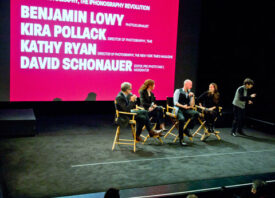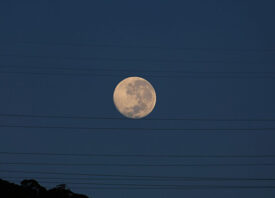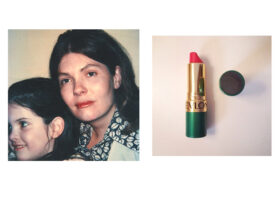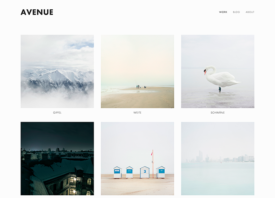Search this site
6 Photo Editors Discuss How They Use Instagram to Find New Talent

© Amr Alfiqy for TIME LightBox, photographer discovered via IG by photo editor Olivier Laurent
While for many years social media has been seen as a tool for procrastination, more and more photographers are recognising the professional benefits of using it to market their photography. The immediacy and accessibility of Instagram are in part what make it so useful to photo editors, art buyers and companies that need to find new work or hire the appropriate person for a commission.
In our recent guide to using Instagram hashtags made in collaboration with PhotoShelter (which you can download for free here) we emphasized the importance of using hashtags to help your work get seen by the right audiences. Following on from this we spoke with six photo editors who gave us insight into how they use Instagram to find and follow the ongoing work of emerging and established photographers.
Olivier Laurent, editor of LightBox at Time
“I constantly use Instagram to discover new talents, but also to study the work of established photographers. One can learn a lot about a photographer’s vision, identity and commitment through her or his Instagram feed. Depending on the situation and my editorial needs, I will either seek a particular photographer or let the app guide me through serendipitous connections to discover people I never knew about, especially outside of my regular circles of acquaintances.
Everyone knows about Devin Allen, the Baltimore native who made the cover of TIME during the 2015 protests, but I regularly publish and assign photographers discovered on Instagram. The most recent one was Amr Alfiqy, an Egyptian photographer who is a refugee in New York. I assigned him to cover the airport protests following President Donald Trump’s controversial travel ban. It shows how Instagram can expose you to new photographic voices when used right.
I either search through particular hashtags or location tags. The latter allows you to find who’s on the scene when something happens around the world and I’m always surprised when I see professional photographers who aren’t taking advantage of these features. Another way to find new voices is by looking at who is following who – sometimes colleagues and friends will discover new talents, and scrolling through their following lists can become a well of information.
I use Instagram every single day, several times a day. Sometimes you’ll see someone new with whom you want to work. You never know what you’ll find on any given day.”

‘Mitiku Kassa, Ethiopia’s commissioner for disaster risk management, in his Addis Ababa office’. © Zacharias Abubeker for Bloomberg Businessweek, found via IG by photo editor Jane Yeomans.
Jane Yeomans, photo editor at Bloomberg Businessweek
“Instagram is one of the many photo tools I use when both assigning and sourcing photos on a daily basis. I often look at Instagram to see where photographers are in the world, as most weeks I am looking to assign a story worldwide. In addition I look at Instagram for existing photos to license. I also use it to build my rolodex/find new photographers. I have licensed photos from photographers I found on Instagram, and hired photographers whose projects I found on Instagram (some photographer’s I already knew of, but saw they were in a place I needed to assign a job). Sometimes if I am looking for a particular event/place I will look by hashtag.”
Kerri MacDonald, Social photo editor at the New York Times
“I have published projects I’ve seen on Instagram, like Mark Hartman’s Coney Island series. I worked with Amanda Boe, another photo editor at The Times, to publish it in our New York section and as a “weekend project” on Instagram. More recently, I worked with Mark Makela on a series he called ‘Primarily Focused.’ Mark shoots regularly for The Times and we email often about Instagram. He’d become focused on primary colors and we made a weekend out of it for @nytimes.
I used social media to find new photographers while I was working in our Hong Kong bureau. Not just Instagram, but Twitter and Facebook, too. In my current role, I don’t hire photographers as frequently as most of others at The Times do. (My primary goal is to work with all of the photographers who are already shooting for us, covering everything from war to food.) But when I do assign, I look at a photographer’s Instagram presence first. When we’re working on a project shot primarily for Instagram, I try to lean toward people who have a robust presence on the platform. We’ve used Instagram hashtags in breaking news situations, but I don’t typically search hashtags to find new photographers. I don’t think there’s necessarily a simple route to finding someone new, such as following the #photojournalism tag, which is massive. I tend to let myself get a little lost, instead, leaping from one account to another. I look at Instagram every day, and I know that many of my fellow photo editors do the same. Part of what I’m doing there is monitoring the @nytimes feeds and looking at what colleagues and friends are posting, but I’m also on the lookout for new work and new styles.”

Image from series ‘Sin and Salvation in Baptist Town’ © Matt Eich, found via IG by Burn Magazine editor Francesca Gennari
Francesca Gennari, freelance editor and photo editor at Burn Magazine
“As a freelance editor, sometimes, especially if I am looking for a specific topic/issue, Instagram becomes a helpful tool. I use it daily—it’s very important to be always connected and to keep an eye on IG, you never know what the next picture will look like… For BURN diary I check in weekly, perhaps 2-3 times a week. Hashtags allow you to filter contents fast in the multitude of images stored in the web. For Burn, we usually get submissions via the Burn Magazine website but sometimes we use Instagram to get a better and deeper look at the photographers we intend to publish. Instagram uses a language that is much more immediate and allows you to understand how a photographer ‘sees’—it often tells you more about a photographer than a photo essay, which is rather filtrated by reality and intention.
I haven’t yet hired anyone via Instagram for my freelance work, but someone actually hired me instead! For Burn, we have featured photographers whom I found on Instagram for both Burn Magazine and @burndiary. It depends on the topic I am looking for, usually I use very specific hashtags in my own research. For @burndiary we usually search for hashtags such as #burnmagazine or #photodiary or #dailydiary. By using these hashtags, the photographer interested in taking over the account will help us to find them pretty quickly. It works both ways.”

Ester is a Nigerian woman of 25 years old, she is living in a shelter for woman with children and unaccompanied children managed by Protezione Civile. She fled from Nigeria few months ago with her daughter called Happiness. She said “I’m happy to be here after a long and tough travel, it has been dangerous for me but mostly for my daughter. Thanks to the Italian town of Riace and its mayor Mimmo my daughter has a chance for a better future here” © Francesco Pistilli for the Open Society Foundations, photographer found by Maggie Soladay via IG.
Maggie Soladay, photo editor at Open Society Foundations
“I am on Instagram daily and I curate Instagram takeovers for the Open Society Foundations Instagram account. By following photo agencies, photo-rich media outlets, and photo collectives like: The Photo Society, Feature Shoot, Visura, Blink, VII, Noor, Rawiya Collective, Boreal Collective, Prime Collective, and multiple Everyday Projects feeds, I learn really important information about who is where and what issues they are committed to.
Instagram has been invaluable during the past couple of years when covering issues of migration, to the US and Europe, from the world’s most war ravaged and unsafe countries. I have licensed images, commissioned shoots, and found Instagram takeover candidates based on knowing who was covering migrant and refugee issues at key points in the crisis like when Macedonian closed its border with Greece. I also have found it helpful to follow photographers in Mexico to see who was covering daily life amid violence in places like Guerrero State, Mexico.
If I am looking for work on a tough category like unaccompanied underage migrants in transit in Europe, I will search hashtags until I find a solid lead to a professional photographer who was at one of the camps or along the same migration routes where they may have encountered this nearly invisible phenomenon.
Each week we hand over our Instagram account to a different photographer (sometimes a collective or team). We pay a stipend to photographers to share their personal projects on the feed. As long as they are covering topics that compliment our work in areas like human rights, justice, and equality. For many photographers forming a relationship with Open Society Foundations happens first with Instagram.
But more often than anything, Instagram keeps photographers and their work in front of my eyes. Their presence and commitment to sharing stories on Instagram is one of the deciding factors in who to work with for certain projects as well”.
Jenna Garrett, photo editor at WIRED
“Photographers often post a teaser image of a new project they’re working on or while they’re on location via Instagram. If it’s interesting, I shoot them an email to learn more. I haven’t yet hired someone whose work I’ve discovered on the platform, but it’s not out of the realm of possibility. Nor do I search for particular hashtags, but maybe I need to! I frequently feature projects on WIRED I find via Instagram. Instagram is my primary and favourite form of social media so I’m always poking around on it. I really like Instagram’s explore feed, and checking out who photographers I admire are following (you can discover some great stuff by doing that!).”



